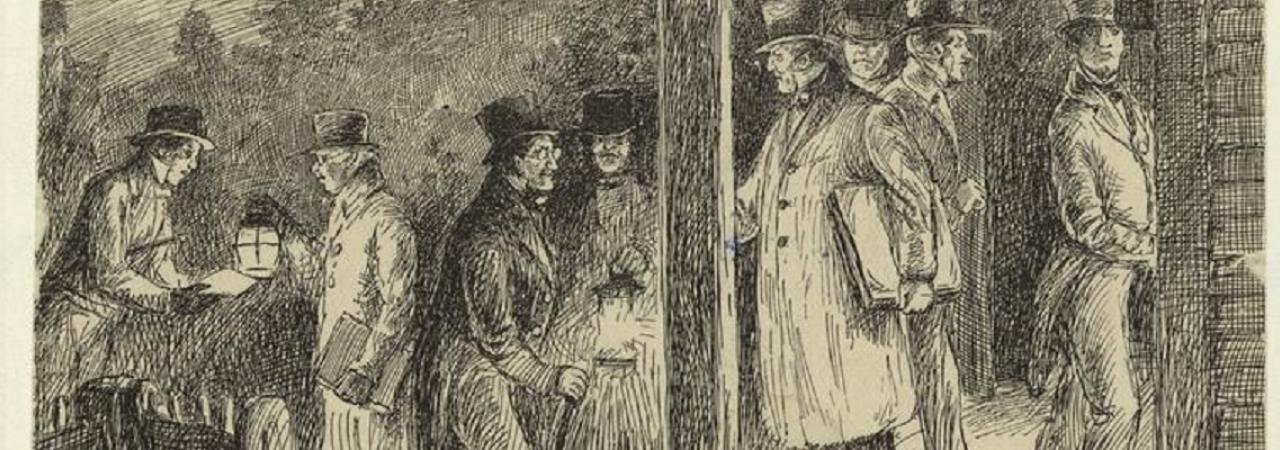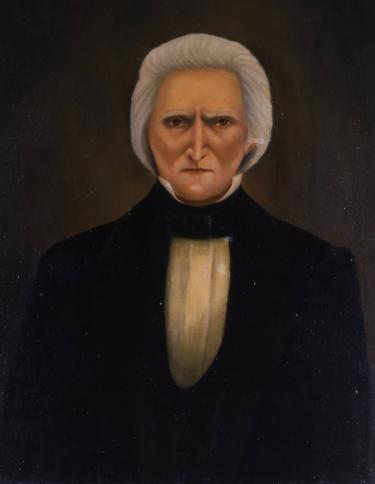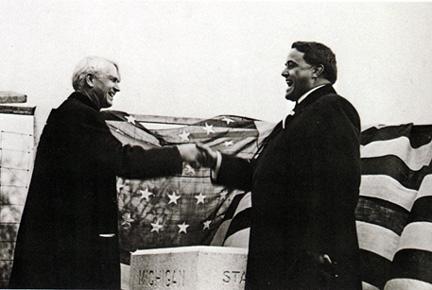The War that Sparked a Sports Rivalry

Few rivalries in sports are as heated and heralded as the rivalry between Ohio State and Michigan. It is considered so important that college football fans refer to it only as “The Game.” While most state and sports rivalries come from arbitrary often insignificant reasons such as relative proximity or athletic conference, the Ohio State-Michigan rivalry’s roots are a part of animosities which started with a 1835 land dispute turned violent known as the War of Toledo. The conflict only had one victim, an injured sheriff; however, the war was built on deep divisions and threatened a total civil war between Ohio and the Michigan Territory.
Like most land conflicts, the Toledo War began with poor cartography. The Congress of the Confederation enacted the Northwest Ordinance in 1787. The ordinance set out plans for settling the area around the Great Lakes. The ordinance established that the border between Ohio and Michigan would be “an east and west line drawn through the southerly bend or extreme of Lake Michigan until it intersected with Lake Erie.” However, the maps the Confederation used inaccurately placed Lake Michigan’s southern tip miles north of its actual location. The original border gave Ohio, the future site of Toledo rather than Michigan when if completed with accurate maps, Michigan would receive the same area.
Ohio was admitted to the union in 1803. In constructing their state constitution, the authors intentionally defended their claim on the land. The document argued that even if future surveys found the original Northwest Ordinance incorrect, they would base their border on the original ordinance. Michigan challenged this, and two separate land surveys were conducted. Both came to opposite conclusions about the land. These surveys created a 468 square mile slice of property on the border of the two states claimed by both states known then as the “Toledo Strip.” The Toledo Strip would be precious to either colony as it included the Maumee Bay, whoever controlled the bay would command a great deal of trade on the great lakes, along with the 1821 completion of the Erie Canal granting trade access to the east coast.

In early 1835, the relatively civil conflict became hot. Ohio Governor Robert Lucas set up legislation to create government within the strip. The Michigan territory was refused statehood because of the dispute and elected 23-year-old hot-headed Stevens T. Mason to be their first governor. Responding to Ohio’s aggression, Mason passed the “Pains and Penalties Act” which harshly punished all officials from Ohio who tried to control the territory with jail time or hefty fines. Both sides promptly raised their militias and instructed them to act against “trespassers.”
President Andrew Jackson desperately wanted to prevent an armed conflict. He sent two officials to broker a compromise, the officials’ proposal recommended that representatives from Ohio should re-survey the land and allow citizens on the border to choose their governments. While Lucas agreed to the deal, Mason refused and prepared for war. Lucas believed that Michigan would accept the agreement and sent surveyors to mark the border while dismissing his militia. Fifty members of the Michigan militia attacked the surveyors on April 26, 1835. While the group only fired shots into the air to scare the surveyors, the assaulting force captured nine of the men. The altercation became known as Battle of Phillip’s Corners.
After the Battle of Phillip’s Corners, many Ohioans believed that Michigan had fired upon the surveyors and began clamoring for war. Lucas, to appease the citizens, established Toledo as the county seat of his eponymous Lucas County, preventing the abduction of Ohio citizens and insulting Michigan, the plan had a budget of $300,000. Michigan one-upped the Ohioans, providing $315,000 to their militia. Lucas continued the tit for tat one-upping, gathering 10,000 volunteers for the Ohio militia. However, rumors spread into Michigan, and the story became exaggerated. One Michigan newspaper dared the “Million” soldiers to enter Michigan so they could “welcome them to hospitable graves.” Throughout the year there were constant skirmishes between the two sides and random arrests of citizens living within the strip. Sheriff Joseph Wood, of Michigan, went into Toledo to arrest prominent members of the Ohio militia. There was a short skirmish and Wood was stabbed multiple times with a penknife. The injuries were minor, but this would be the first and only bloodshed of the war.
The next year Jackson proposed a compromise to the citizens of Michigan. They would be granted statehood if they gave up on the Toledo strip. In addition to statehood, Michigan would also receive the upper peninsula. Michigan refused the offer due to the perceived lack of value of the upper peninsula. However, by the end of 1836, Michigan was nearing bankruptcy. Luckily, the federal government was currently in the process of distributing a $400,000 = surplus; however, Michigan could only access this money and relieve its debt crisis by becoming a state. In a controversial act of desperation, Michigan accepted Jackson’s initial compromise on December 14, 1836.
Even though the war only drew one casualty and seemed solved in 1836, the conflict continued throughout each state’s history, creating a permanent rivalry. There were constant debates over the border, even after the deal had been made. The border was not officially mapped and defined until President Woodrow Wilson ordered the border surveyed in 1915. After the survey was complete, the governors of Michigan and Ohio met on the border shook hands and unveiled a plaque which quoted Robert Frost, proclaiming “Good fences make good neighbors.” Even after it was firmly set, the two states still quibbled. In 1978, the two states went before the Supreme Court to argue over their competing claims to the Lake Erie waters. The court sided with Ohio’s state constitution. Since 1978, the border has remained the same, and neither state has raised a militia.

It must be noted how much preservation has played into these two sides continued recognition of the events of the Toledo war. From the governors of both states coming together to acknowledge their shared past in 1915 to the state of Ohio officially recognizing and protecting the site of the Battle of Phillip’s Corner in 2002. Ohio and Michigan have preserved their rivalry and more importantly their history by remembering the past.
The first football game between Michigan and Ohio State was held in 1897; the Toledo war was still fresh in the mind of many. Michigan exacted, some, revenge for the loss of Toledo, beating Ohio State, 34-0. Today the Michigan-Ohio State is considered one of the best sports rivalries in the world, and few know it is based on the animosity that once could have split the union.

